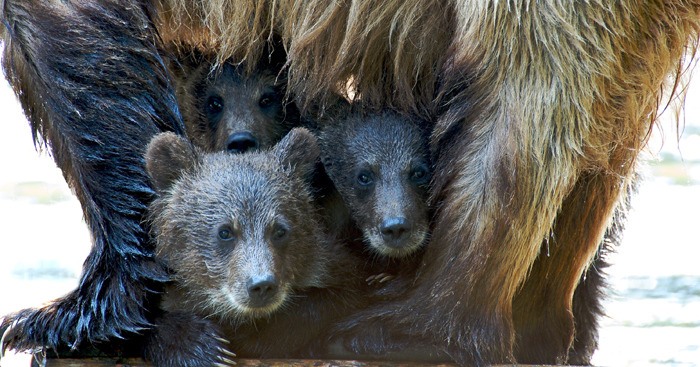VICTORIA – A little-noticed protest tent sprouted up on the rain-soaked B.C. legislature grounds earlier this month.
Green Party MLA Andrew Weaver spoke, asking whether B.C. residents would tolerate trophy hunting of killer whales. That would be a federal matter, but the point is vividly made about the onset of B.C.’s traditional spring grizzly bear hunt.
It’s bigger this year, with Kootenay and Chilcotin wildlife management regions reopened after closures were enacted to preserve grizzly populations. In all, more than 1,000 grizzly bears are up for grabs. As with limited-entry hunts for deer and other animals, only about a third of those hunts are successful in an average year.
The rally was sponsored by the Coastal First Nations Great Bear Initiative, the partnership with U.S.-directed environment groups Sierra Club, Greenpeace and ForestEthics that has become so influential in B.C. affairs. It produced a survey showing that 88 per cent of B.C. residents oppose trophy hunting, and its California experts calculate a 10-fold increase in value when bear hunting gives way to bear watching.
The Raincoast Conservation Society has bought up half a dozen guiding territories on the remote B.C. coast. Combined with government restrictions, more than half the coast is now off limits to bear hunting. Naturally, activists want the whole province shut down.
Wildlife management is the responsibility of Forests, Lands and Natural Resource Operations Minister Steve Thomson. He’s heard plenty from all sides and he maintains that bear watching and bear hunting will continue to coexist in B.C.
Thomson has just introduced legislation to permit hunting guide territories to be operated by corporations as well as individuals. This is a long-sought change, allowing First Nations companies and others access to bank loans to expand the industry.
Non-resident hunters are required to hire a licensed guide-outfitter. Resident hunters pay $32 for a one-year hunting licence and $80 for a grizzly bear tag. Non-Canadians pay $180 for the licence and $1,030 for a chance at a grizzly.
Hunting in general is making a comeback in B.C. Ministry data show hunting licenses had declined to 85,633 in 2006, but recovered to reach 97,828 by 2013.
Thomson credits the work of the B.C. Wildlife Federation, which runs hunter training courses. Another program, Becoming an Outdoor Woman, has helped revive hunting and camping as a family activity, he said.
Growing up hunting in northeastern B.C., I was taught not to shoot anything I’m not prepared to eat. I also remember the struggles to protect caribou and other endangered prey species that at one time had B.C. biologists resorting to shooting wolves from helicopters.
The reopening of grizzly bear territories is marketed to urban residents as a horrible crime against nature. In fact, it’s a sign of increasing population.
Problems in B.C. wildlife these days include the fragile mountain caribou herds of the Kootenays, which have been subject to intensive management including relocation of animals.
The ministry has also begun a five-year study of declining moose populations across a vast area of the Interior subject to salvage logging in the wake of the pine beetle epidemic.
Vancouver media recently highlighted a grizzly hunt by NHL journeyman Clayton Stoner. Typically, U.S. enviros promoted the deceased bear by name, “Cheeky,” and photos showed its carcass stripped to the skeleton by scavengers after Stoner left with the hide, paws and head.
They don’t mention that the same fate awaits animals that die of starvation or other natural causes, which increase when animals overpopulate. As with many B.C. issues, there’s a cartoon version sold to impressionable city dwellers, and then there’s the truth.
Tom Fletcher is legislature reporter and columnist for Black Press. Twitter: @tomfletcherbc
